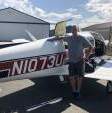Crosswind takeoffs
-
Members Online
- Daily
- Ibra
- hammdo
- Fly Boomer
- CCAS
- MikeOH
- birdofjoy
- Z W
- 303mooney
- Aaviationist
- IvanP
- Schllc
- M Terry
- Griswold
- Elijah
- PT20J
- Sabremech
- Scooter
- Mobius708
- CL605
- FlyingDude
- Justin Schmidt
- PeteMc
- donkaye
- Nukemzzz
- Fritz1
- TCC
- katzhome
- Shiroyuki
- Brian2034
- MattD89
- Splinters
- TravelingIA98
- GeeBee
- Marc_B
- spistora
- RightrudderM20E
- 201er
- Culver LFA
- redbaron1982
- Andy95W
- George Braly
- jetdriven
- VetRepp
- mluvara


Recommended Posts
Join the conversation
You can post now and register later. If you have an account, sign in now to post with your account.